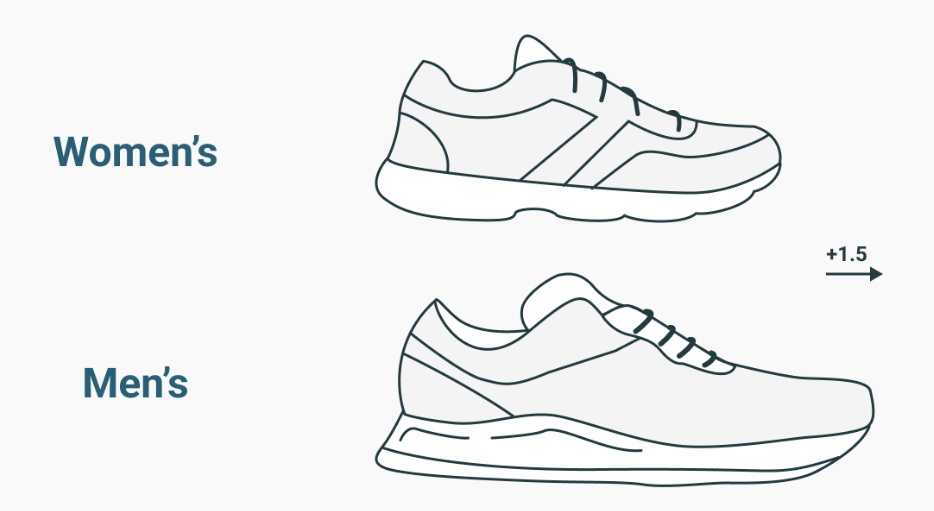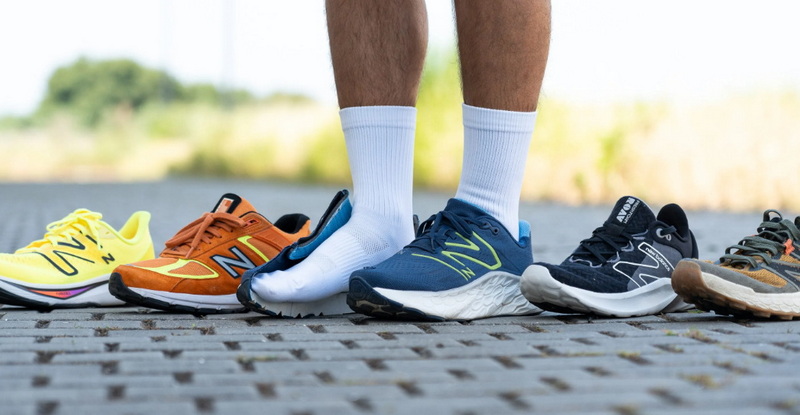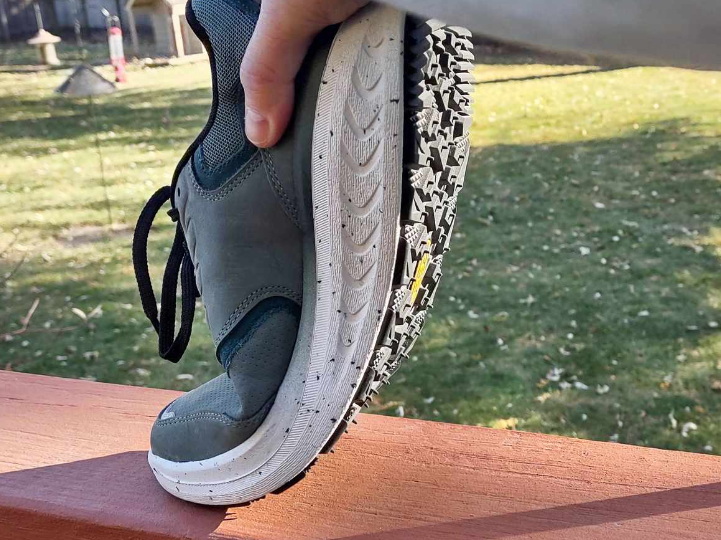Content Menu
● Anatomical Differences
>> Foot Shape
>> Q-Angle
● Structural Differences in Shoe Design
>> Fit and Width
>> Weight and Cushioning
>> Flex Grooves
>> Heel Design
● Performance Considerations
>> Pronation Control
>> Weight Distribution
● Technological Innovations
>> Gender-Specific Cushioning
>> Adaptive Support Systems
>> Customizable Fit Options
● Choosing the Right Shoe
● Conclusion
● FAQ
>> 1. Can women wear men's running shoes and vice versa?
>> 2. Are there any performance differences between men's and women's running shoes?
>> 3. How often should I replace my running shoes?
>> 4. Are more expensive running shoes always better?
>> 5. Should I have different running shoes for different types of runs?
● Citations:
Running is a popular form of exercise that requires proper footwear to ensure comfort, performance, and injury prevention. While many assume that running shoes are universal, there are significant differences between men's and women's running shoes. These differences are not merely cosmetic but are based on the unique anatomical and biomechanical characteristics of male and female runners. In this comprehensive guide, we'll explore the key distinctions between men's and women's running shoes and why choosing the right pair is crucial for your running journey.

Anatomical Differences
The primary reason for the differences in men's and women's running shoes lies in the anatomical variations between male and female feet and lower body structures.
Foot Shape
Women's feet typically have a different shape compared to men's feet. Women generally have:
- A wider forefoot and toe area
- A narrower heel
This difference in foot shape necessitates a different last (the mold used to shape the shoe) for women's running shoes[1][3]. The wider forefoot allows for more comfort and natural toe splay, while the narrower heel helps prevent slippage and provides better stability.
Q-Angle
The Q-angle, or quadriceps angle, is another significant anatomical difference between men and women. This angle is formed by the line connecting the center of the patella to the anterior superior iliac spine and the line connecting the tibial tuberosity to the center of the patella[1].
Women generally have:
- Wider hips
- A larger Q-angle
This larger Q-angle can lead to increased pronation (inward rolling of the foot) in women, which requires additional support in the shoe design[1].
Structural Differences in Shoe Design
Based on these anatomical differences, running shoe manufacturers have developed specific design features for men's and women's shoes.
Fit and Width
Men's running shoes are typically:
- Wider overall
- Larger in size
Women's running shoes are designed to be:
- Wider in the forefoot and toe area
- Narrower in the heel
- Generally smaller in size[2]
These differences in fit ensure that the shoe properly supports the foot's natural shape and movement during running.
Weight and Cushioning
Due to physiological differences, women generally have about 15% less muscle mass than men of comparable height and shoe size[1]. This difference in body composition affects the design of running shoes in the following ways:
- Women's shoes are designed to sustain about 15% less impact as each foot strikes the ground
- Men's shoes often have denser and more durable midsole materials to support greater impact forces
- Women's shoes typically have softer midsoles and are lighter overall[2]
Flex Grooves
Flex grooves are the indentations on the outsole of the shoe that allow for natural foot flexion. In women's running shoes:
- Flex grooves are often deeper
- This design helps compensate for women's generally lower body mass, making it easier to flex the midsole during the running motion[1]
Heel Design
The angle of the heel counter (the rigid structure around the heel) differs between men's and women's running shoes:
- Men's shoes often have a more angled heel to accommodate their tendency to strike the ground at a steeper angle
- Women's shoes typically have a flatter heel design, reflecting the shallower angle at which women's feet tend to strike the ground[5]

Performance Considerations
The differences in men's and women's running shoes are not just about comfort; they also impact performance and injury prevention.
Pronation Control
Due to the wider Q-angle, women may be more prone to overpronation. As a result, women's running shoes often incorporate:
- Additional medial support
- Strategically placed outsole rubber
- Varying densities of midsole foam to help control pronation and promote a more neutral foot strike[5]
Weight Distribution
The lighter weight of women's running shoes is not just about accommodating smaller sizes. It's also designed to:
- Reduce fatigue during long runs
- Improve running economy
- Enhance overall performance
Men's shoes, while heavier, are built to withstand greater impact forces and provide durability for typically heavier runners.
Technological Innovations
As research in biomechanics and material science advances, running shoe companies continue to innovate, creating gender-specific technologies to enhance the running experience.
Gender-Specific Cushioning
Some brands have developed cushioning systems that adapt to the runner's weight and stride. For example:
- ASICS uses Solyte cushioning material in a less dense form for women's shoes, providing greater impact absorption and more bounce[9]
- Other brands may use different foam densities or structures in men's and women's models of the same shoe line
Adaptive Support Systems
Innovative support systems have been developed to address the unique needs of female runners:
- ASICS' Gender Specific Space Trusstic system is designed to accommodate the lower arch height that women may experience due to hormonal fluctuations[9]
- This system provides the right balance of support and flexibility throughout the menstrual cycle
Customizable Fit Options
To address the variability in foot shapes within each gender, some brands offer:
- Multiple width options (narrow, standard, wide)
- Customizable insoles
- Heat-moldable components that adapt to individual foot shapes
Choosing the Right Shoe
While understanding the differences between men's and women's running shoes is important, it's crucial to remember that individual fit is paramount. Here are some tips for choosing the right running shoe:
1. Get professionally fitted at a specialty running store
2. Consider your foot shape, arch type, and running gait
3. Try on multiple brands and models
4. Test the shoes on a treadmill or in-store running area
5. Don't be afraid to try the opposite gender's shoe if it provides a better fit
6. Replace your running shoes every 400-500 miles or when you notice significant wear
Remember, the best running shoe is the one that feels most comfortable and supports your unique foot structure and running style.
Conclusion
The differences between men's and women's running shoes are significant and based on sound biomechanical research. From the overall shape and fit to the cushioning and support systems, these gender-specific designs aim to enhance comfort, prevent injuries, and improve performance for runners of all levels.
As technology and our understanding of running biomechanics continue to evolve, we can expect even more tailored solutions for both male and female runners. However, it's important to remember that while these general differences exist, individual variation is substantial. The key to finding the perfect running shoe lies in understanding your own feet, running style, and comfort preferences.
Whether you're a seasoned marathoner or just starting your running journey, taking the time to find the right shoe – regardless of whether it's marketed for your gender – can make all the difference in your running experience. Happy running!

FAQ
1. Can women wear men's running shoes and vice versa?
Yes, it's possible for women to wear men's running shoes and vice versa if they provide a better fit. The most important factor is finding a shoe that fits well and feels comfortable. However, be aware that you may need to adjust the size, as men's shoes are typically wider and about 1.5 sizes larger than women's shoes.
2. Are there any performance differences between men's and women's running shoes?
While the primary differences are in fit and cushioning, these can indirectly affect performance. Women's shoes are generally lighter and more flexible, which can contribute to improved running economy. Men's shoes often provide more stability and durability for heavier runners. However, individual biomechanics play a more significant role in performance than gender-specific shoe design.
3. How often should I replace my running shoes?
The general rule is to replace your running shoes every 400-500 miles or every 4-6 months for regular runners. However, this can vary based on factors such as your weight, running style, and the surfaces you run on. Look for signs of wear like compressed cushioning, worn-out treads, or any discomfort during runs.
4. Are more expensive running shoes always better?
Not necessarily. While higher-priced shoes often incorporate advanced technologies and materials, the best shoe for you is the one that fits well and feels comfortable during your runs. Many mid-range shoes offer excellent performance and durability. It's more important to focus on finding the right fit and features for your specific needs rather than the price tag.
5. Should I have different running shoes for different types of runs?
Having multiple pairs of running shoes can be beneficial, especially if you engage in various types of running. For example, you might use a more cushioned shoe for long distances, a lighter shoe for speed work, and a more rugged shoe for trail running. This approach can also extend the life of your shoes and reduce the risk of repetitive stress injuries by varying the impact on your feet and legs.
Citations:
[1] https://www.livestrong.com/article/269999-what-is-the-difference-between-womens-mens-running-shoes/
[2] https://marathonhandbook.com/difference-between-mens-and-womens-shoes/
[3] https://www.nikkiphysio.co.za/post/run-series-1-men-s-women-s-shoes-is-there-a-difference
[4] https://www.istockphoto.com/photos/running-shoes
[5] https://www.youtube.com/watch?v=G5Y93CvExOU
[6] https://www.poizon.com/article/mens-vs-womens-running-shoes
[7] https://www.rebelsport.co.nz/contentassets/4aa698c98319495784dee1bb86f6d56d/main-image-mob-600x570.jpg?sa=X&ved=2ahUKEwjKssjtzrKKAxX-8MkDHRm7Nd8Q_B16BAgHEAI
[8] https://unsplash.com/s/photos/running-shoes
[9] https://www.asics.com/za/en-za/blog/article/born-to-run-understanding-women's-running-shoes

















